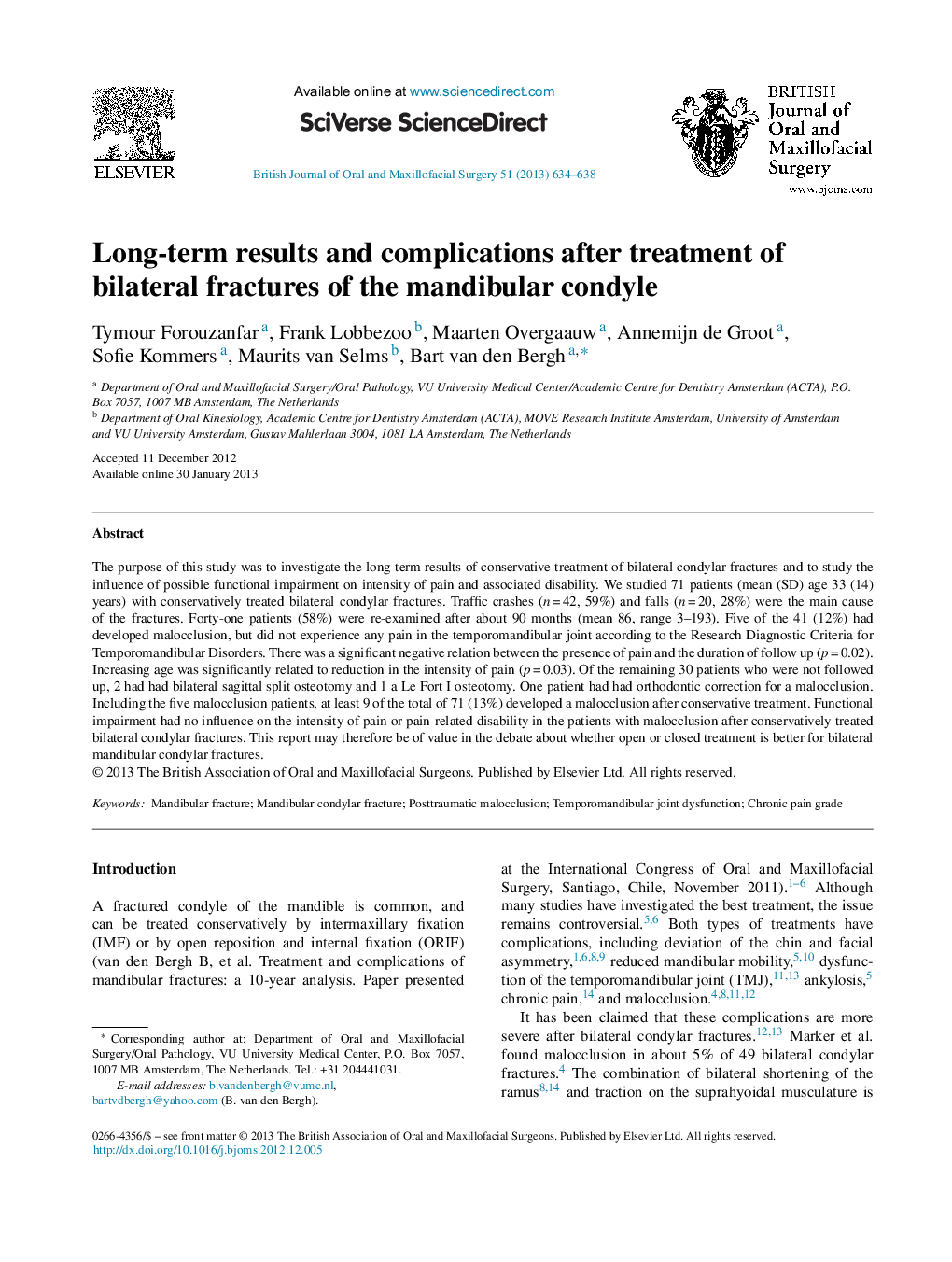| Article ID | Journal | Published Year | Pages | File Type |
|---|---|---|---|---|
| 3123226 | British Journal of Oral and Maxillofacial Surgery | 2013 | 5 Pages |
The purpose of this study was to investigate the long-term results of conservative treatment of bilateral condylar fractures and to study the influence of possible functional impairment on intensity of pain and associated disability. We studied 71 patients (mean (SD) age 33 (14) years) with conservatively treated bilateral condylar fractures. Traffic crashes (n = 42, 59%) and falls (n = 20, 28%) were the main cause of the fractures. Forty-one patients (58%) were re-examined after about 90 months (mean 86, range 3–193). Five of the 41 (12%) had developed malocclusion, but did not experience any pain in the temporomandibular joint according to the Research Diagnostic Criteria for Temporomandibular Disorders. There was a significant negative relation between the presence of pain and the duration of follow up (p = 0.02). Increasing age was significantly related to reduction in the intensity of pain (p = 0.03). Of the remaining 30 patients who were not followed up, 2 had had bilateral sagittal split osteotomy and 1 a Le Fort I osteotomy. One patient had had orthodontic correction for a malocclusion. Including the five malocclusion patients, at least 9 of the total of 71 (13%) developed a malocclusion after conservative treatment. Functional impairment had no influence on the intensity of pain or pain-related disability in the patients with malocclusion after conservatively treated bilateral condylar fractures. This report may therefore be of value in the debate about whether open or closed treatment is better for bilateral mandibular condylar fractures.
